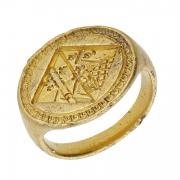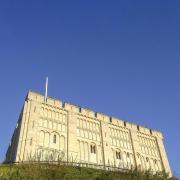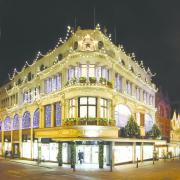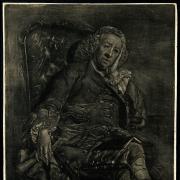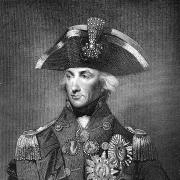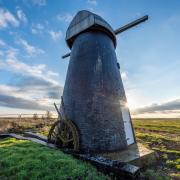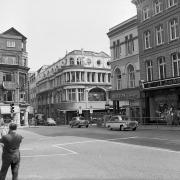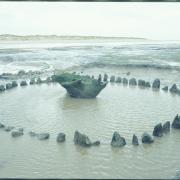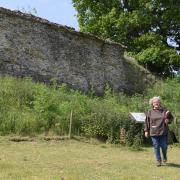Chris Armstrong tells the story of the Norfolk farmer’s son who captained the Cutty Sark to fame and fortune
Richard Woodget, was born in 1845 at Burnham Norton, less than three miles from the birthplace of Horatio Nelson. Though he came from a farming family he went to sea as an indentured apprentice at 15, initially on a small coastal vessel of a type known as a ‘billyboy’.
These small vessels were little more than barges, rounded at both bows and stern to create the largest possible space for cargo. They plied their trade down the East coast, from Northumberland to London.
The following year he moved on to a small schooner, which was also engaged in coastal work, and eventually to a brig, the British Ensign, which sailed internationally. His indenture completed, he sailed as an Able Seaman while studying for his Mate’s Certificate – on one long voyage he was signed on as ship’s cook – no record seems to exist to attest to his culinary skills.
He acquired his Mate’s Certificate in 1868, qualifying him to serve as number two to the Master and in 1871 his Master’s Certificate. This was also the year he married Maria Smith, with whom he had four children – three of them were to sail under their father on the Cutty Sark -each of them duly qualifying as a Master Mariner.
Having a Master’s Certificate was not enough to guarantee him a command - in fact it was to be another 10 years before he got his opportunity, most of the interim spent as a mate. Finally, in 1881 a ship owner, John Willis, offered Woodget command of his ship Coldstream.
The role of master was a demanding one. On many occasions a ship would sail with a cargo for a faraway port only to discover there was no immediate prospect of a fresh cargo to bring home, or profitably to take elsewhere.
In those days it was a key part of the master’s role to locate a new cargo, negotiate the price and find the most profitable route home, picking up new cargo at intermediate ports if necessary. That was in addition to navigating, sailing the ship home, training the apprentices and maintaining order among the crew – quite difficult when the ship might be idling in a foreign port for weeks while the master tried to find another cargo.

In short, the role demanded navigational skills, great seamanship, diplomacy, people skills, salesmanship, negotiating skills and judgement. It’s not surprising that many Masters fell short of the expectations of their owners. Woodget wasn’t one of them; from the start he produced good profits from his trading on the Coldstream and Willis recognized his potential.
1869 had seen the launch of the Cutty Sark, built in Dumbarton for Willis. He was a tough negotiator himself, the package of compensation clauses he built in, and the price he negotiated, created financial problems for the builders, but Willis was very pleased with the final product.
The ship had been commissioned specifically for the China tea trade, where speed was key to profitability as the earliest arrivals produced the highest prices, and profits. But if Willis was a tough negotiator, his forward planning was less shrewd – indeed his crystal ball must have been pretty clouded.
1869 didn’t just see the launch of the Cutty Sark, it also saw the opening of the Suez Canal. Combined with the increasing reliability, and speed, of steamships the opening of the Canal spelt the beginning of the end for tea clippers - the prevailing winds did not favour their entry to the canal, and the extra distance they had to sail by not using it put them at a significant disadvantage. Despite some stunningly quick voyages in the early years of the Cutty Sark it was soon obvious that she could not compete.
Her tea clipper days ended in Shanghai when, after weeks spent trying to find a cargo, her master died and was replaced by James Wallace, who had been mate. The ship moved to a general trading role under several masters, some of whom were not entirely satisfactory.
Wallace certainly wasn’t. On Wallace’s first, and only, voyage in command Sidney Smith, the mate he had chosen murdered one of the crew who had been goading him. The mate was originally locked away on board, but at the next port Wallace contrived to help him escape.

The crew were not amused, and when back at sea they went on strike. The ship became becalmed and was at risk of capture by pirates or of being ‘rescued’ by self-seeking salvage operators.
Eventually Wallace, having reputedly filled his pockets with stones to weigh him down, jumped overboard and was never seen again, upon which the wind picked up and the crew returned to work, sailing back to Anyar, the Indonesian port they had just left, where a new master, Captain Bruce, joined the ship.
If the crew thought that no-one could be worse than Wallace, they soon learnt otherwise. Not only was Bruce a poor seaman, he was an habitual drunkard, and worse, in his attempts to economise to increase profits, he under-stocked crew rations, leaving them half-starved.
His reign was short, too. He was succeeded by a Captain Moore who was a far more reliable figure and was in command when Willis switched the ship from trading general cargo to a regular run carrying wool from Australia back to London.
Meantime Richard Woodget had been busy commanding the Coldstream and making good profits for Willis, and when Moore moved on in 1885 it coincided with Woodget’s return from a spectacularly profitable four-year voyage. Willis promptly rewarded him with captaincy of Cutty Sark – a choice he was never to regret.
Moore had done much to improve the condition of the ship which had deteriorated badly during the short terms of her previous two masters, and had successfully completed the first Australian wool run voyage, and Willis appointed him master of his favourite ship, the Tweed, but it was under Woodget that Cutty Sark was to have her finest hours.
Woodget was a first-class seaman and an able and popular manager of his crew. His financial acumen was already recognised by Willis and he was both liked and respected by his crew, normally about 25 strong and of various nationalities. Woodget was a man of courage and experience.

His time as an able seaman meant that he thoroughly understood the work of the crew and had himself proved able to do anything that he asked of them. He was prepared to push the ship hard, and he chose much more southerly routes from Australia than was generally the case, in order to pick up the trade winds.
This was not without risk and the ship sometimes found herself sailing through icebergs, but the crew reposed great confidence in their master, and he repaid that confidence by achieving extraordinarily fast passages.
A devout and committed Christian, a total abstainer and a non-smoker, he was perhaps the antithesis of the general perception of a hard-driving captain. He held prayer meetings on deck and kept a stock of religious tracts and Temperance leaflets handy which he would pass out, even – according to one account – hurling them towards other ships he passed.
But if his crew respected his seamanship, they also certainly liked the manner in which he managed them. One of his favourite habits, when the ship was between cargoes, was to exercise by riding his bicycle along the lower decks which would normally hold cargo.
If there wasn’t room to cycle, he would roller skate instead. There were generally a number of apprentices in the crew and he was happy to teach them how to ride as well as the rudiments of their career. Three of his sons served at least part of their apprenticeship on Cutty Sark, one of them progressing to be mate – he was clearly committed to encouraging them.

Throughout the 10 years he was master the family home remained in Norfolk, in Downham Market. He took the Cutty Sark on 10 voyages to Australia on the wool run during that period, achieving some extraordinary times – on his first voyage sailing out to Sydney took just 77days, and he clipped four days off that on the return journey. As it had been with tea, speed was of the essence in the wool trade as the wool needed to be available in England for the January wool sales.
Eventually the increasingly reliable performance of steamers rendered sailing ships redundant on this route too, but not before Woodget had been able to enjoy the discomfiture of those on the P&O steamer Britannia, travelling overnight at about 15 knots, when they were astonished to be overtaken by Cutty Sark doing 17! She sailed, said her proud master, ‘like a witch’.
For company on board, Woodget took two monkeys as pets and some collie dogs from whom he bred a number who went on to win prizes in Australian dog shows. The collies were not universally popular with the crew. Some letters home from an apprentice were discovered a few years ago which described the collies as ‘vicious’!
His other principal hobby was photography and at the Royal Museums, Greenwich there are a number of examples of his work, illustrating daily life on board, the passage between icebergs and general views of the ship both in harbour and under sail. For the latter, Woodget launched two boats and suspended a plank between them to hold his camera for the best shot.

His time in the ship came to an end when John Willis decided to dispose of her to a Portuguese trading company and although he took over as master of another of Willis’s ships, he made only one voyage before retiring back to end his days in Norfolk, dying in 1928. Before his death he saw the Cutty Sark back in British hands, bought from its Portuguese owners as an act of charity by Captain Dowman, a retired master from Falmouth, who put her to use as a training school.
After his death his widow, a member of the Courtauld family, ‘sold’ the ship for 10 shillings (50p) to the Thames Nautical Training College, and donated a further £5,000 for her maintenance. On one occasion, in 1924, Cutty Sark had been taken from Falmouth to act as a ‘committee ship’ for a regatta at Fowey.
Although she was towed there by tug, she was, by Captain Dowman’s invitation, under the command of Richard Woodget, by that time 78 years old. What memories that trip must have brought back, and what a fine gesture on Dowman’s part.





